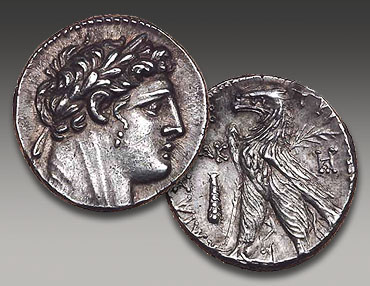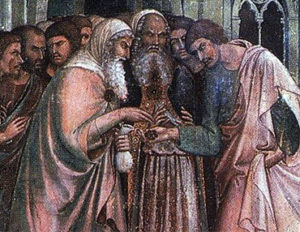
Phoenician Shekel
Tyre, Phoenicia
103~102 B.C.
In ancient times, the Phoenicians were skilled seafarers and traders. Tyre, the port city from where they sailed was the largest in Phoenicia (modern day Lebanon). It had been largely independent for nearly two-and-a-half millennium until it was destroyed by Alexander the Great in 332 BC. Though the city was rebuilt, it wasn’t until 126 BC that Tyre regained its independence. Subsequently, the growing influence of the Romans created great animosity with the city’s Jewish populace.
The coins of Phoenicia were struck at Tyre between 125 BC and 66 AD. Though several different denominations were struck, it was the shekel that became the most famous of their coinage. The shekel is mentioned in the Bible four times, with its most important reference involving Judas Escariot, a renowned disciple of Jesus Christ.
The silver shekels of Tyre were highly respected for their purity. Thus, temple authorities only accepted coins from the city for the payment of taxes. All male Jews were required to submit a yearly half-shekel temple tax, which was the equivalent of one week’s wages for a mason.

The city god or “Baal” of Tyre was Melqarth, a Herculean figure whose head appeared on one side of the coin. On the other side was an eagle standing on the prow of a ship, symbolizing the Phoenicians’ active seafaring trade throughout the Mediterranean. Next to the eagle is a club and the symbol for the date the coin was struck, which was in 103/2 BC.
In the Book of Matthew, chapters 26 and 27, the Apostle Judas agreed to deliver Jesus to the Romans for 30 pieces of silver — 30 shekels. After Jesus was condemned to death, Judas attempted to return the money to free Jesus, but he was refused. Despondent, he then threw the money down on the temple floor and left to hang himself. The temple elders took the money and bought an open field for burying the unknown.
This specimen acquired by the museum was minted around 30 years before Jesus was crucified. It was purchased from ancient coin specialist Dr. Paul Rynearson in the early 1990s. It was subsequently sold at auction.